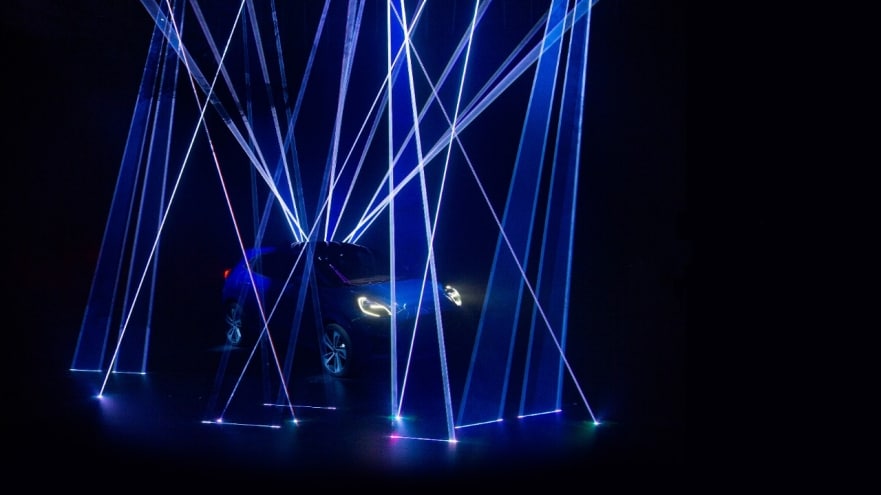- First image of Ford Puma reveals athletic and desirable styling of the SUV-inspired crossover model set to join the expanding Ford model line-up later this year
- Ingenious flexible rear stowage solution that will deliver best-in-class uncompromised load space and luggage capacity is among innovations developed following customer input
- Ford Puma fuel-efficiency and performance will be optimised with advanced Ford EcoBoost Hybrid 48-volt technology
AMSTERDAM, Netherlands, April 3, 2019 – Ford today revealed the first image of the Ford Puma – an SUV-inspired compact crossover that fuses stunning exterior design; best-in-class luggage capacity and flexibility; and 48-volt mild-hybrid powertrain technology.
Puma will go on sale at the end of the year, and will be produced with exceptional craftsmanship and quality at Ford’s Craiova Assembly Plant, Romania, following nearly €1.5 billion investment since 2008.
“Innovatively engineered and seductively styled, we think Puma is going to really resonate with compact-car customers in Europe. If you want a car that can turn heads on Friday night, and swallow your flat-pack furniture with ease on Saturday afternoon, then you’ve found it,” said Stuart Rowley, president, Ford of Europe. “We've gone to every length to give customers the flexibility they want, with progressive and evocative styling, so that they can drive the best-looking car they've ever owned.”
The first image of the Ford Puma reveals significant styling cues including distinctive wing-top mounted headlamps and athletic, seductive, aerodynamic lines, alongside compact crossover proportions that support raised ride-height for a confidence-enhancing driving experience and class-leading uncompromised luggage capacity of 456 litres.
Developed to meet and exceed a clear requirement for flexible luggage space following extensive discussions with customers, the Puma’s innovative rear stowage solution provides a deep, versatile storage compartment that is capable of comfortably accommodating two golf bags in an upright position.
Ford EcoBoost Hybrid technology will optimise Puma fuel-efficiency* and deliver powerful, responsive performance, with up to 155 PS. A belt-driven integrated starter/generator (BISG) enables recovery and storage of energy usually lost during braking and coasting to charge a 48‑volt lithium-ion air-cooled battery pack.
The BISG also acts as a motor, seamlessly integrating with a low-friction, three-cylinder 1.0‑litre EcoBoost petrol engine and using the stored energy to provide torque substitution – which reduces the amount of work required from the petrol engine to maximise fuel savings, and torque supplementation – which increases the total torque available from the powertrain for optimised performance.
Puma joins Ford’s expanding line-up of SUV and SUV-inspired crossover models in Europe, including the Fiesta Active, Focus Active, EcoSport, Kuga, Edge, and the all-new Explorer Plug-In Hybrid – unveiled yesterday for the first time at Ford’s special “Go Further” Experience.
SUVs now account for more than one in five Ford vehicles sold in Europe, and sales rose more than 19 per cent in 2018.
# # #
Anticipated CO2 emissions from 124 g/km, fuel-efficiency from 5.4 l/100 km
*The declared Fuel/Energy Consumptions, CO2 emissions and electric range are measured according to the technical requirements and specifications of the European Regulations (EC) 715/2007 and (EC) 692/2008 as last amended. Fuel consumption and CO2 emissions are specified for a vehicle variant and not for a single car. The applied standard test procedure enables comparison between different vehicle types and different manufacturers. In addition to the fuel-efficiency of a car, driving behaviour as well as other non-technical factors play a role in determining a car's fuel/energy consumption, CO2 emissions and electric range. CO2 is the main greenhouse gas responsible for global warming.
Since 1 September 2017, certain new vehicles are being type-approved using the World Harmonised Light Vehicle Test Procedure (WLTP) according to (EU) 2017/1151 as last amended, which is a new, more realistic test procedure for measuring fuel consumption and CO2 emissions. Since 1 September 2018 the WLTP has begun replacing the New European Drive Cycle (NEDC), which is the outgoing test procedure. During NEDC Phase-out, WLTP fuel consumption and CO2 emissions are being correlated back to NEDC. There will be some variance to the previous fuel economy and emissions as some elements of the tests have altered i.e., the same car might have different fuel consumption and CO2 emissions.

